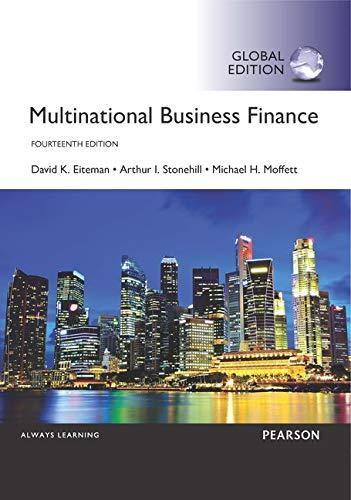Apple does not use tax gimmicks. Apple does not move its intellectual property into offshore tax havens
Question:
Apple does not use tax gimmicks. Apple does not move its intellectual property into offshore tax havens and use it to sell products back into the U.S. in order to avoid U.S. tax; it does not use revolving loans from foreign subsidiaries to fund its domestic operations; it does not hold money on a Caribbean island; and it does not have a bank account in the Cayman Islands. Apple has substantial foreign cash because it sells the majority of its products outside the U.S.
—Apple CEO Tim Cook, in testimony before the U.S. Senate Permanent Subcommittee on Investigations, 2013.
Life—or at least your public reputation—is difficult to manage when you are possibly the world’s largest and most profitable company, and you are constantly criticized for not paying enough in taxes. Such is the angst at Apple.
Apple has engineered one of the more aggressive tax-saving global tax strategies in global business.
Global Operations Apple is in many ways organized like any other large multinational company. It is headquartered in Cupertino, California, and is a U.S. incorporated company—Apple, Inc. It is here, as noted in Exhibit A, that essentially all of its global research and development is conducted, and therefore its intellectual property created. Although Apple does use contract manufacturers for most of its product construction and assembly (primarily in China), it does manufacture all of its A5 series of microprocessors—
the self-described engine of Apple products—at its

production facility in Austin, Texas. Manufactured final product is then shipped directly to Apple’s distribution centers globally.
All of Apple’s sales outside the Americas are booked through its Irish subsidiary ASI, Apple Sales International.
ASI purchases the product from the contract manufacturers, taking title to the goods, and then resells to its international distribution company, ADI, Apple Distribution International. As demonstrated in Exhibit A, ASI then enjoys large profitability on the resale. ASI, as is typical of much of global commerce today, may take legal title to the goods but the goods never physically pass through Ireland, being shipped directly from Chinese manufacturers to the distribution centers for in-country sales, like all of the retail companies listed for Europe in Exhibit A. ASI then pays out all of its profits, in the form of dividends, to Apple Operations Europe (AOE), its parent company, also in Ireland.
Apple’s tax management is then based on a series of structures it has established, beginning with the principle of a cost sharing agreement on the development and ownership of intellectual property.
Cost Sharing Apple has a cost sharing agreement between Apple Inc. and ASI, an agreement between the parent company and the Irish subsidiary. The two units agree to share in the cost of development of Apple’s products, and in turn to share the economic rights of any resulting intellectual..........
Mini-Case Questions 1. What is the single most important element of Apple’s global tax strategy?
2. Why do most of Apple’s businesses in Ireland not have a country of tax residence?
3. Why does Apple Operations International (AOI)—
the Irish subsidiary that captures most of Apple’s global profits outside the Americas—not pay taxes to Ireland or the United States?
Step by Step Answer:

Multinational Business Finance
ISBN: 9781292097879
14th Global Edition
Authors: David Eiteman, Arthur Stonehill, Michael Moffett





